The author, Calvin Rydbom, is an archivist and VP of Marketing with Pursue Posterity.
I can't imagine how much fun every day would be if I got to do something new and different. If it works, I might do it again tomorrow and if it doesn't, just try something else. Even if it worked, I still might try something else. Orson Welles described coming to Hollywood and being let loose to make a movie much like being a kid in a candy store. I'm guessing, maybe even hoping, that being told you get to create whatever television program you want and then broadcast it over the airwaves to anyone who had a television was a pretty similar sensation. It must have been a hoot to be a player in television’s infancy.
A lot of those television pioneers had movies, stage, or even variety shows to use as a jumping off point. This wasn't all that true for the performers whose job it was to entertain children in the late 1940s and early 1950s. Arguably, it was the folks who created programs aimed at children who had the largest throw it against the wall and see what sticks way of doing things. Programs designed for children in Cleveland were not all that unique when compared to the rest of the country. But they were our shows, Cleveland shows. And they were shows hosted and often created by performers who are still considered iconic in our region's history.
That first group of performers aren't quite what you'd call iconic, in fact they are largely what you'd call forgotten. I'd like to talk a little about them though, and a little about how they paved the way for those who came after them.
I doubt very few of its participants, if any, thought of television as an art form worth preserving in the late 1940s. Very little effort was made to save those early television programs, and children's programming was no exception. Knowing who they were, where they came from, or how they came up with what they did wasn't information worth saving in their minds, I suppose. Very little footage or records exist unfortunately. Most of the shows from that era exist only in the memories of those who were there.
Cleveland television officially began in October of 1947 when WEWS became our region's first broadcast station. Not long after WEWS' debut, Uncle Ed's Magic Farm, sponsored by Weather Bird Shoes, started a two year run from 1948 to 1950. The main occupant of the magic farm was named Skeeter Scarecrow, and he is certainly one of those performers lost in the past, at least for the time being. Who knows what is out there still waiting to be found in someone's attic.
The first big television star among Cleveland's children was Jim Breslin, who spent years as a director at WEWS. He was better known those days as Texas Jim. Much like other shows of the era, little or no footage remains of the Texas Jim television show. The only footage I've been able to locate thus far is from a 1956 WEWS promo, and it's wonderfully entertaining. You can certainly see why Texas Jim was a favorite of area tykes. Later on, Breslin appeared as Professor Yule Flunk alongside Captain Penny, who was one of the more iconic hosts that followed on the heels of the original bunch..
Another program to make its debut in 1948 on WEWS was Uncle Jake's House. Gene Carroll, who had significant success earlier as a radio & stage comic and radio disc jockey, appeared as Uncle Jake. The pairing of Carroll and WEWS was a good match as he hosted a program on the station up until his death in 1972. Most Clevelanders old enough to remember Carroll probably remember him more for his Sunday morning talent show which was more or less America's Got Talent for Cleveland, although the talent level might not have on the level of the shows that dominate network prime-time today.
You know the old gag where you walk behind a couch, crouching down more and more so it looks like you are walking down stairs? Carroll did a variation of that on his show when he had the kids crouch down so it seemed they were going downstairs on Uncle Jake's elevator. Early technology at its finest.
After a three years stint at a Toledo station, Mary Ellen Colchagoff hosted Fun Farm on WEWS. And Linn Sheldon, who later found fame as Barnaby, had a practice run of sorts as Uncle Leslie.
Although very little exists of these early WEWS shows they certainly paved the way for Captain Penny and Barbara Plummer, the host of Romper Room, to become stars in the late 1950s, and stay local celebrities into the early 1970s. I was never much of a Romper Room fan as Miss Barbara never viewed Calvin in her magic mirror when she seemingly saw so many other kids. But I can still remember Captain Penny telling my five year old self at the end of every show “You can fool some of the people all of the time, and all of the people some of the time, but you can't fool Mom. She's pretty nice and she's pretty smart. If you do what Mom says you won't go far wrong." Strong words and sage advice for a five year old to contemplate. Plus he introduced me to The Three Stooges, something any boy would thankful for. It wasn't til years later I wondered why a train engineer was called Captain.
The second television station in the Cleveland market debuted in October of 1948. Originally called WNBK, it went through a couple call letter changes before settling on the WKYC we're now familiar with. As opposed to its competition WNBK waited a few years before entering the competition for younger viewers.
The first show for children on WNBK, or at least the first that had any sort of lasting impact, was Captain Glenn's Boarding House. Starting in the summer of 1953 the program starred Glenn Rowell, who had been Gene Carroll’s partner in radio and stage for many years, and a puppeteer named Cy Kelly. The show itself was really just a copy of previous show called Captain Glenn's Bandwagon , which Rowell had been hosting in Cincinnati before deciding to try his luck in Cleveland.
Right around that same time someone at WNBK decided that perhaps they could keep kids entertained by showing silent films with a narrator and some music. And so Noontime Comics with Joe Bova appeared on Cleveland airwaves. Bova also wound up hosting Tip Top Clubhouse, which had a just out of his teens sidekick named Dom Deluise. Years before he became a star handling the comedy relief in the 1970s Burt Reynolds films, Deluise started his career with Bova in Cleveland before following him to New York in the mid 1950s. They tried to make a go of Tip Top Clubhouse in New York but had little to no success. Bova did stay a fixture on New York television for years though using essentially the same format while giving the show numerous names.
In 1956, the station, by then called KYW, got pretty creative with Morning Surprise hosted by Tom Haley and his robot sidekick Mr. Rivitz. What made the show different was it not only aimed itself at preschool age children but at their mothers as well, as it mixed interviews that might interest adults in with the cartoons and comedy interplay between Haley and Mr. Rivitz.
Around the same time KYW secured the rights to Popeye cartoons with the idea they could be a show in their own right. Luckily for Cleveland children during the next few decades they decided to find themselves a host instead of just showing the cartoons. Lin Sheldon showed up for his audition in a variation of the costume he had worn while playing a Leprechaun in Finian's Rainbow. A friend at the station had tipped him off that all the hopefuls the previous day had shown up in sailor outfits. Sheldon decided if he could stick out and be unique his chances of landing the job might be better. And so we have Barnaby, who taught us "If anybody calls, tell them Barnaby said hello. And tell them that I think you are the nicest person in the whole world... Just you."
Cleveland's third television station got started a little later than the other two, debuting in December of 1949 as WXEL before eventually becoming today's WJW. King Jack's Toybox got things rolling there, with Bogo Heath, Wally Sanford and Pat Ryan as King Jack and his loyal subjects, which of course included court jesters to handle the laughs Pat Ryan also co-hosted The Play Lady along with a Frog Puppet. By far the longest running show to debut on WXEL was Dave Herbert's Mister Banjo. Unfortunately for WXEL, Herbert's almost two decade run as an iconic children's television host happened after he left Cleveland for Miami, Florida on Banjo Billy's Fun Boat. Red Goose Merry-Go Round with Walk Kay, as Kousin Kay, stuck around for a while but WXWL/WJW was never able to create a popular host as its two competitors had for several years.
In the early 1960s they even attempted a Bozo the Clown program, but it really didn't click with Cleveland the way the character did in Chicago, where to call Bozo beloved would be a bit of an understatement. It wasn’t until 1964 when they brought in Ray Stawiarski and his Franz The Toymaker character from Columbus that they found a character whose popularity could hold it's own against Captain Penny and Miss Barbara of Romper Room over on WEWS and Barnaby on WKYC.
I would imagine that having so many programs being offered on the Cleveland stations, Akron’s WAKR never felt the need to develop its own children’s programming. Program listing from the 1950s do list a childrens program called Hinky Dinks, which is just as lost to the past program as any of its Cleveland Counterparts.
Sadly, almost all programs broadcast before the early 1960s were lost to us. If anyone out there has some fond memories of these programs I'd love to hear from them.
A lot of those television pioneers had movies, stage, or even variety shows to use as a jumping off point. This wasn't all that true for the performers whose job it was to entertain children in the late 1940s and early 1950s. Arguably, it was the folks who created programs aimed at children who had the largest throw it against the wall and see what sticks way of doing things. Programs designed for children in Cleveland were not all that unique when compared to the rest of the country. But they were our shows, Cleveland shows. And they were shows hosted and often created by performers who are still considered iconic in our region's history.
That first group of performers aren't quite what you'd call iconic, in fact they are largely what you'd call forgotten. I'd like to talk a little about them though, and a little about how they paved the way for those who came after them.
I doubt very few of its participants, if any, thought of television as an art form worth preserving in the late 1940s. Very little effort was made to save those early television programs, and children's programming was no exception. Knowing who they were, where they came from, or how they came up with what they did wasn't information worth saving in their minds, I suppose. Very little footage or records exist unfortunately. Most of the shows from that era exist only in the memories of those who were there.
Cleveland television officially began in October of 1947 when WEWS became our region's first broadcast station. Not long after WEWS' debut, Uncle Ed's Magic Farm, sponsored by Weather Bird Shoes, started a two year run from 1948 to 1950. The main occupant of the magic farm was named Skeeter Scarecrow, and he is certainly one of those performers lost in the past, at least for the time being. Who knows what is out there still waiting to be found in someone's attic.
The first big television star among Cleveland's children was Jim Breslin, who spent years as a director at WEWS. He was better known those days as Texas Jim. Much like other shows of the era, little or no footage remains of the Texas Jim television show. The only footage I've been able to locate thus far is from a 1956 WEWS promo, and it's wonderfully entertaining. You can certainly see why Texas Jim was a favorite of area tykes. Later on, Breslin appeared as Professor Yule Flunk alongside Captain Penny, who was one of the more iconic hosts that followed on the heels of the original bunch..
Another program to make its debut in 1948 on WEWS was Uncle Jake's House. Gene Carroll, who had significant success earlier as a radio & stage comic and radio disc jockey, appeared as Uncle Jake. The pairing of Carroll and WEWS was a good match as he hosted a program on the station up until his death in 1972. Most Clevelanders old enough to remember Carroll probably remember him more for his Sunday morning talent show which was more or less America's Got Talent for Cleveland, although the talent level might not have on the level of the shows that dominate network prime-time today.
You know the old gag where you walk behind a couch, crouching down more and more so it looks like you are walking down stairs? Carroll did a variation of that on his show when he had the kids crouch down so it seemed they were going downstairs on Uncle Jake's elevator. Early technology at its finest.
After a three years stint at a Toledo station, Mary Ellen Colchagoff hosted Fun Farm on WEWS. And Linn Sheldon, who later found fame as Barnaby, had a practice run of sorts as Uncle Leslie.
Although very little exists of these early WEWS shows they certainly paved the way for Captain Penny and Barbara Plummer, the host of Romper Room, to become stars in the late 1950s, and stay local celebrities into the early 1970s. I was never much of a Romper Room fan as Miss Barbara never viewed Calvin in her magic mirror when she seemingly saw so many other kids. But I can still remember Captain Penny telling my five year old self at the end of every show “You can fool some of the people all of the time, and all of the people some of the time, but you can't fool Mom. She's pretty nice and she's pretty smart. If you do what Mom says you won't go far wrong." Strong words and sage advice for a five year old to contemplate. Plus he introduced me to The Three Stooges, something any boy would thankful for. It wasn't til years later I wondered why a train engineer was called Captain.
The second television station in the Cleveland market debuted in October of 1948. Originally called WNBK, it went through a couple call letter changes before settling on the WKYC we're now familiar with. As opposed to its competition WNBK waited a few years before entering the competition for younger viewers.
The first show for children on WNBK, or at least the first that had any sort of lasting impact, was Captain Glenn's Boarding House. Starting in the summer of 1953 the program starred Glenn Rowell, who had been Gene Carroll’s partner in radio and stage for many years, and a puppeteer named Cy Kelly. The show itself was really just a copy of previous show called Captain Glenn's Bandwagon , which Rowell had been hosting in Cincinnati before deciding to try his luck in Cleveland.
Right around that same time someone at WNBK decided that perhaps they could keep kids entertained by showing silent films with a narrator and some music. And so Noontime Comics with Joe Bova appeared on Cleveland airwaves. Bova also wound up hosting Tip Top Clubhouse, which had a just out of his teens sidekick named Dom Deluise. Years before he became a star handling the comedy relief in the 1970s Burt Reynolds films, Deluise started his career with Bova in Cleveland before following him to New York in the mid 1950s. They tried to make a go of Tip Top Clubhouse in New York but had little to no success. Bova did stay a fixture on New York television for years though using essentially the same format while giving the show numerous names.
In 1956, the station, by then called KYW, got pretty creative with Morning Surprise hosted by Tom Haley and his robot sidekick Mr. Rivitz. What made the show different was it not only aimed itself at preschool age children but at their mothers as well, as it mixed interviews that might interest adults in with the cartoons and comedy interplay between Haley and Mr. Rivitz.
Around the same time KYW secured the rights to Popeye cartoons with the idea they could be a show in their own right. Luckily for Cleveland children during the next few decades they decided to find themselves a host instead of just showing the cartoons. Lin Sheldon showed up for his audition in a variation of the costume he had worn while playing a Leprechaun in Finian's Rainbow. A friend at the station had tipped him off that all the hopefuls the previous day had shown up in sailor outfits. Sheldon decided if he could stick out and be unique his chances of landing the job might be better. And so we have Barnaby, who taught us "If anybody calls, tell them Barnaby said hello. And tell them that I think you are the nicest person in the whole world... Just you."
Cleveland's third television station got started a little later than the other two, debuting in December of 1949 as WXEL before eventually becoming today's WJW. King Jack's Toybox got things rolling there, with Bogo Heath, Wally Sanford and Pat Ryan as King Jack and his loyal subjects, which of course included court jesters to handle the laughs Pat Ryan also co-hosted The Play Lady along with a Frog Puppet. By far the longest running show to debut on WXEL was Dave Herbert's Mister Banjo. Unfortunately for WXEL, Herbert's almost two decade run as an iconic children's television host happened after he left Cleveland for Miami, Florida on Banjo Billy's Fun Boat. Red Goose Merry-Go Round with Walk Kay, as Kousin Kay, stuck around for a while but WXWL/WJW was never able to create a popular host as its two competitors had for several years.
In the early 1960s they even attempted a Bozo the Clown program, but it really didn't click with Cleveland the way the character did in Chicago, where to call Bozo beloved would be a bit of an understatement. It wasn’t until 1964 when they brought in Ray Stawiarski and his Franz The Toymaker character from Columbus that they found a character whose popularity could hold it's own against Captain Penny and Miss Barbara of Romper Room over on WEWS and Barnaby on WKYC.
I would imagine that having so many programs being offered on the Cleveland stations, Akron’s WAKR never felt the need to develop its own children’s programming. Program listing from the 1950s do list a childrens program called Hinky Dinks, which is just as lost to the past program as any of its Cleveland Counterparts.
Sadly, almost all programs broadcast before the early 1960s were lost to us. If anyone out there has some fond memories of these programs I'd love to hear from them.
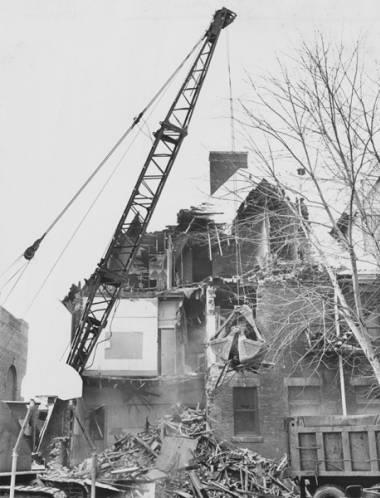
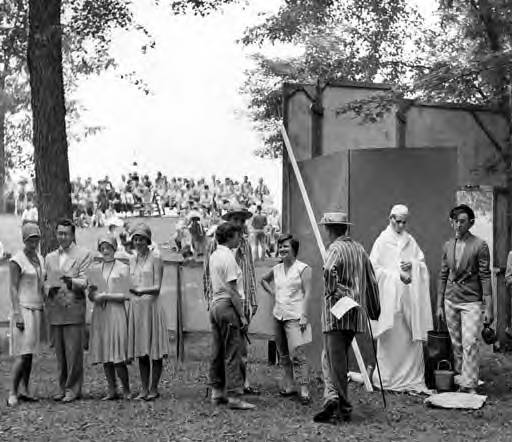
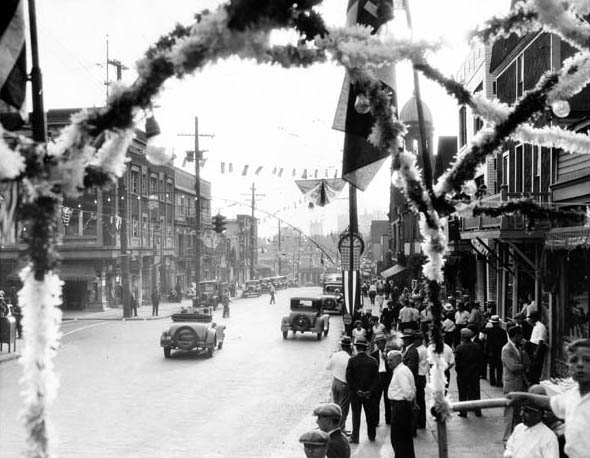

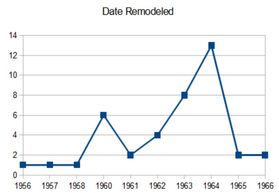
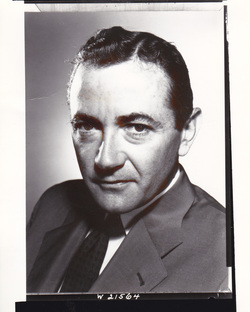
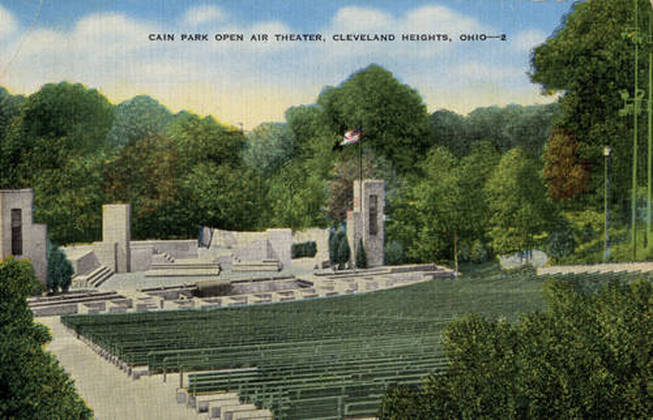

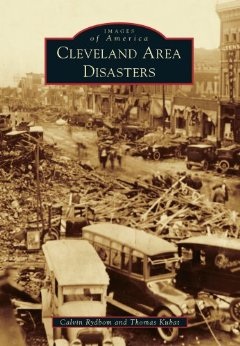
 RSS Feed
RSS Feed
